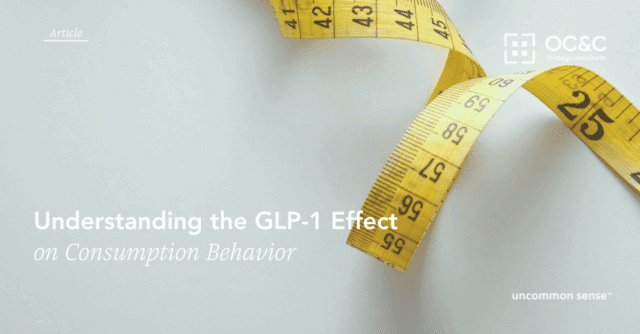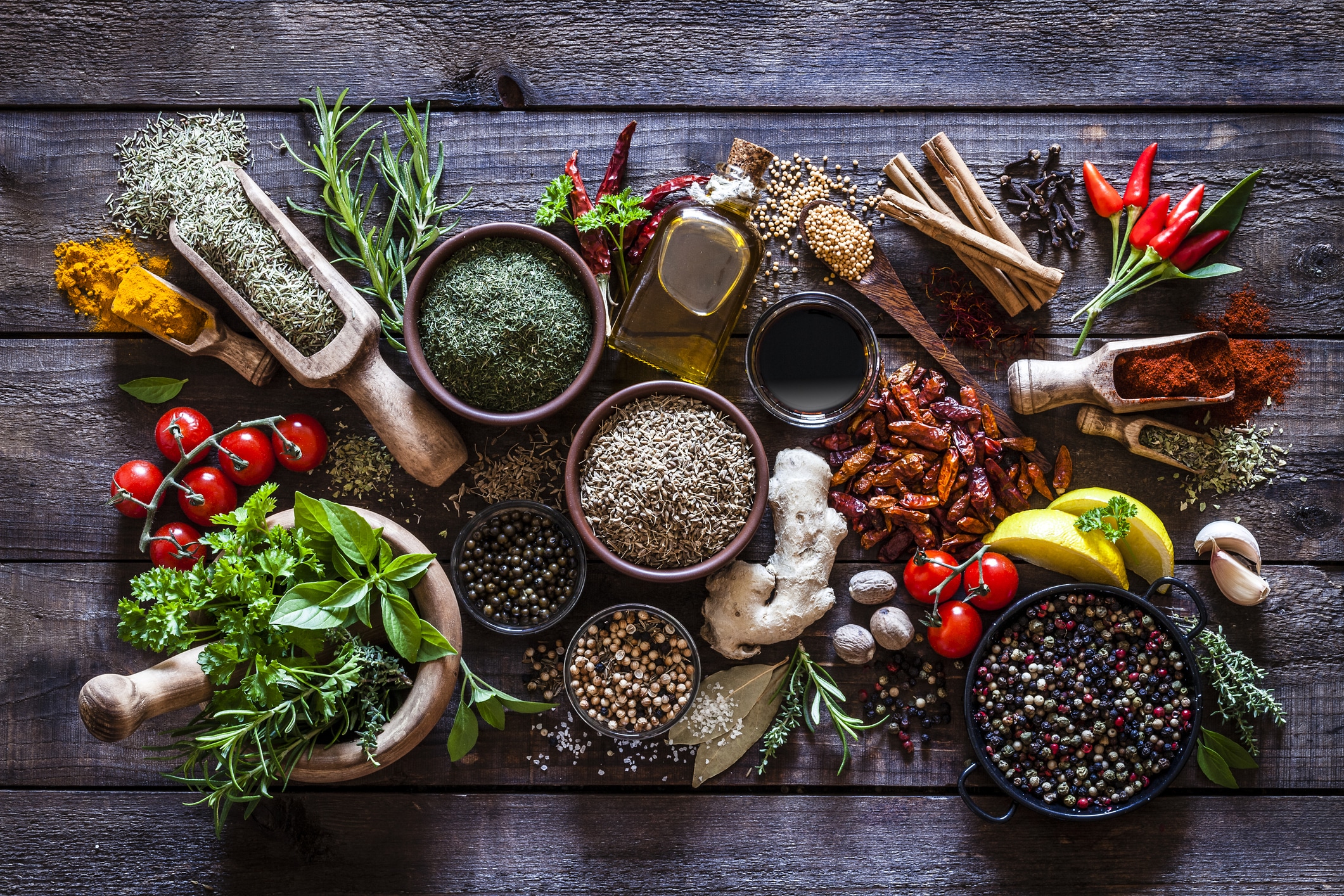
Understanding the GLP-1 Effect on Consumption Behavior
GLP-1 medications such as Ozempic and Wegovy, reduce caloric intake by mimicking satiety hormones, slowing gastric emptying, and modulating brain reward signals related to high-fat and high-sugar foods. Our survey (as of April 2025) stated that 9% of surveyed adults are currently using GLP-1 medications, with an additional 6% having previously used them. Leading GLP-1 products have demonstrated weight loss of ~20% is feasible in 12-18 months, implying a significant change in diet behavior for those consumers.
Material consumption suppression for users, combined with rapid growth in user penetration is having a knock on effect on Food & Beverage spending behavior. We estimate that current usage levels are resulting in an aggregate 1-2% reduction in F&B volumes. As such, we see the ongoing growth in GLP-1 usage as a structural headwind to the industry, albeit not a paradigm shift. However, crucially, this consumption decline is not felt uniformly across categories, occasions and demographics.
Three Dimensions of Disruption
Category Variation
Snacking and unhealthy food groups have been disproportionately impacted by reductions. In-home grocery spend declines are most evident in categories such as salty snacks, and sweet categories like bakery and cookies Categories that play into impulse are more exposed as consumers appetites are suppressed impacting snacking occasions; and those that are high in fat / sugar are seeing further reductions as reward signals for these food groups are reduced. Conversely, there’s limited evidence of a significant increase in spending on healthier categories, though protein-rich and functional products show resilience
Occasion Variation
The appetite-suppressing effects of GLP-1s have reduced meal frequency, increased portion control and reduced sizes. Consumption during non-core eating occasions such as late-night snacking or social dinners, has decreased substantially. In fact, away-from-home (AFH) dining is one of the most impacted segments. Emerging research suggests that particularly in the first 6 months of usage, users reported a 6% decrease in spend on food AFH.
Notably, however, during the 2nd 6-month period of GLP-1 usage the impact on dinner spend fell to ~2%. This suggests a behavioural component in consumer preferences is a factor, beyond change in appetite. GLP-1 users could actively be trying to diet in parallel to using GLP-1 medications, or they are taking time to normalize their diet routine before returning to an equilibrium that works best for them.
Demographic Variation
Current GLP-1 usage skews toward higher-income, middle-aged (+35) consumers, particularly those adopting the medication for weight loss rather than diabetes. These consumers are often “super users; high-frequency, high-value purchasers whose altered habits could disproportionately impact F&B brands.
The Dynamics of Cycling and Reengagement
Emerging evidence indicates a cyclical pattern of use among GLP-1 consumers, with our research suggesting 60% of GLP-1 users discontinue within six months. However, many experience weight regain and express interest in restarting treatment. This on/off cycling introduces volatility in active user numbers and complicates volume forecasting. Thus far, the aggregate impact on consumption is moderate, therefore mitigating the total impact on F&B players.
For investors and executives, GLP-1s represent a persistent headwind, not a temporary blip. However, they also signal an opportunity to reposition brands, restructure portfolios, and innovate product offerings aligned with evolving consumer needs.
Why GLP-1 Is a Structural, but Navigable Headwind
- We expect penetration to continue increasing due to big addressable audience, improving accessibility (affordability and supply), and new products coming to market to address side effects; however, some evidence rate of adoption is slowing.
- Impact is mitigated somewhat as a big segment of consumers stop taking within the first 6 months; of the growing number of ‘churned’ users there is strong appetite to take it again at some point in the future, suggesting that we will likely see a degree of on/off cycling within the consumer base.
- As such, there is a persistent headwind with potentially far-reaching implications such as:
- Reduced volume sales in historically profitable categories
- Pressure to develop premium, portion-controlled, or functional products
- Rising importance of consumer segmentation in market planning
- Emerging regulatory considerations (e.g., ingredient labelling, packaging innovation, health claims) as GLP-1 use becomes more widespread
How OC&C can Support You
At OC&C Strategy Consultants, we are partnering with clients to navigate this transformation with rigor and foresight. Our team brings unmatched expertise to support your strategic goals, having supported over 500 deals with local players and global champions.
Connect with our industry leaders below or email [email protected] to find out how we can support you.
Key Contacts

Coye Nokes
Partner

Michael Brooks
Associate Partner

Barney Wallace
Partner

Claire Dannatt
Partner





